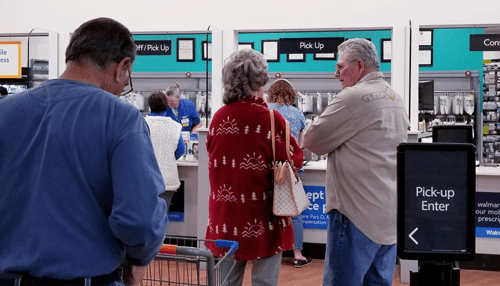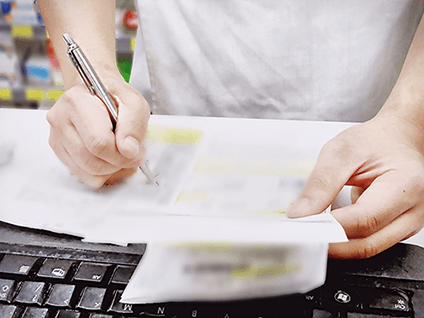How does a pharmacy owner limit liability when there is always a chance of employees making mistakes such as billing mistakes, prescription errors, and documentation errors? Can any pharmacy owner really know about all the liability they must guard against without obtaining legal help and advice? Learn about the different mistakes that can be made and then take steps to avoid them happening.
How to Protect A Business from Pharmacy Liability?
Guarding against pharmacy liability is not an easy task. So many things can go wrong. Hiring well-trained professionals and then giving them more training is a start. Improving the operational guidelines is another good idea. The pharmacy area where prescriptions are filled should follow the latest and best designs. All government regulations should be strictly adhered to. In addition, every pharmacy owner should have the best legal advice available as needed.
In case of problems, many pharmacists carry their own liability insurance, and pharmacy owners also can carry liability insurance. Insurance will help cover the costs of lawsuits and professional liability. But liability insurance is not the same as having ongoing sound legal advice. A pharmacy needs both forms of protection. Hopefully, when a pharmacy is in the process of opening, the owner will have expert legal advice on setting the business up and being compliant with all of the important government regulations and pharmacy law.
An expert attorney can help pharmacies avoid or respond to potential lawsuits, audits, and investigations by government entities.
Mistakes and Behaviors That Can Lead to Liability or Pharmacy Investigation and Regulatory Enforcement Action
All pharmacies must be careful to know and follow every government regulation and safety precautions to avoid lawsuits and penalties. Misconduct and mistakes that cause liability for pharmacies include the following items.
- The wrong drugs used to fill a prescription. This can include filling a prescription with medication with a similar but different name, mixing up several prescriptions for different people, or misreading the doctor’s written prescription.
- By law, prescription bottles are required to have special adhesive RFID labels that include use instructions. Giving incorrect instructions or leaving warnings off the label can lead to serious consequences. The pharmacist should always be very careful to place the correct instructions and warnings on labels for medication bottles.
- Filling a prescription with an incorrect dosage can lead to increased side effects for the patient. It can lead to death.
- When the pharmacist does not check a prescription for dangerous interactions with other prescriptions the patient has been given or does not ask the patient about allergies that might cause dangerous reactions, they may be liable for bad outcomes.
- Billing mistakes and fraud can lead to fraud investigations by Medicare, Medicaid, insurance companies, and Medi-Cal. These can have serious repercussions for the pharmacy.
With the internet making communication with the doctors sending prescriptions easier, it is even more important to get the correct information and avoid mistakes. When prescriptions are sent to pharmacies by e-mail, there is no excuse for not being able to read the doctor’s writing. And, if the pharmacist questions a prescription, they can easily contact the doctor for confirmation.
The Legal Responsibilities of Pharmacists to Their Patients
A pharmacist has legal responsibilities to their patients that should not be breached.
- Making sure the quality of medications is acceptable
- The medications prescribed for patients must be suitable for each patient
- Making sure the supply of medications falls within the law
- Advising patients properly about medications and the proper way to take them
- Carefully supervising the supply chain of restricted medications
- Giving advice to health care professionals concerning effective and safe medications uses
- Advising patients about which medications for sale in the pharmacy will match their symptoms and give them relief
- To supervise or monitor the production and preparation or medications by the manufacturer before they are given to patients. The medications must be safe and of acceptable quality.
Pharmacies may be held responsible for malpractice when pharmacists make serious errors that lead to bad results for patients. It has been estimated that more than one million people are injured by medication errors every year.
Reducing Liability by Instituting Strategies to Minimize Dispensing Errors
The goal of every pharmacy should be to reduce liability by minimizing dispensing errors and being fully compliant with all regulations. Errors are often made because of faulty systems. Some good strategies for minimizing errors include:
- Avoid transcription errors by requiring use of reliable ways to identify patients to avoid medication mistakes due to similar names.
- Whenever there is a question about a transmitted prescription, call the prescriber for verification of details and document the communication. Verbal prescriptions should be transcribed on a prescription pad and read back to the caller for verification.
- Avoid mistakes due to look-alike or sound-alike drugs by placing reminders or warnings on bottles or in the computer system about commonly confused medication names.
- Avoid errors with zeros, faulty units, or decimal points in prescriptions by using computer warnings or stocking only one strength of a medication. There should also be a copy of the ISMP list of error-prone symbols, abbreviations, and dose designations in every pharmacy.
- Better organization of the workplace can reduce dispensing mistakes and facilitate a better workflow. The work area must have adequate lighting, counter space, and a comfortable temperature and humidity. All drug containers must be properly labeled.
- Make sure all prescriptions are thoroughly checked and counter-checked to catch errors. The written prescription should be compared to the product that is on the computer and the label being printed and with the medication being filled.
- Store drugs in an organized way with labels facing forward and easily readable. Store lookalike drugs in separate areas of the medication storage space. Periodically check drugs and remove expired medications and replace them with fresh supplies.
- Each pharmacy should try to reduce distractions for pharmacists and improve the internal work environment to help reduce dispensing errors.
- Heavy workloads can cause stress and lead to more dispensing errors. Scheduling appropriate staff and manageable workloads is important. There should be regular breaks for staff will reduce stress.
- Provide better counseling for patients to catch errors before they leave the pharmacy. Show the patient the medication. If it is a prescription refill, they will recognize the pills. Make sure patients understand the directions for use.
- When errors happen, they should be reported so strategies can be discussed to avoid that error being made in the future.
Learning the legal obligations of the pharmacy, familiarizing staff about the obligations they have to patients, and adopting strategies that will help avoid expensive mistakes are all ways to avoid liability for pharmacies.



